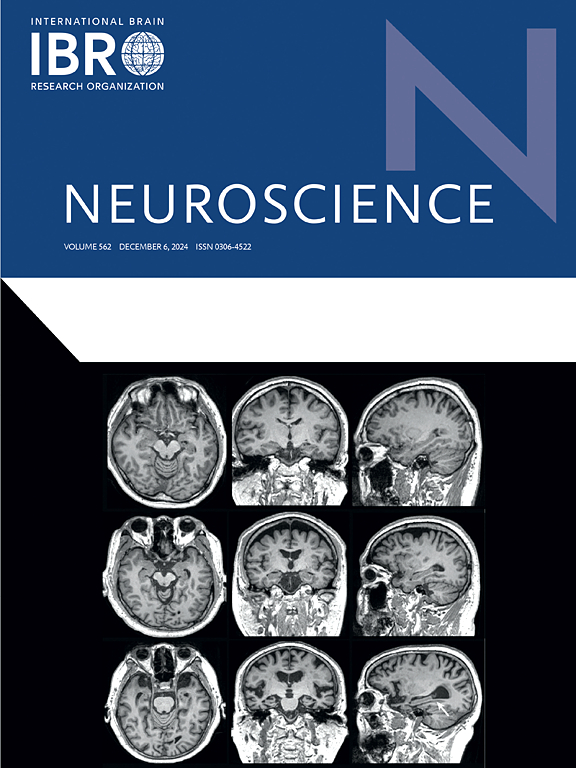儿童创伤中皮质结构和功能连接的改变。
IF 2.9
3区 医学
Q2 NEUROSCIENCES
引用次数: 0
摘要
童年创伤是精神障碍的独立危险因素。本研究利用多模态MRI技术整合皮质结构测量和功能连接(FC)来识别创伤的神经生物学标志物。本研究招募了215名参与者,根据儿童创伤问卷分为创伤组(n = 57)和匹配良好的非创伤组(n = 158)。我们比较了两组之间皮质体积(CV)和表面积(SA)的差异,并在确定的结构簇上使用种子进行了基于种子的FC分析。采用逻辑回归的机器学习方法对有和没有童年创伤的个体进行分类。儿童期创伤组均表现出较低的SA和CV。在左中央前回、中央后回和中央旁小叶组成的簇中发现SA减少,在涉及左中央后回的簇中观察到CV降低。基于种子的FC分析显示,cv簇与颞上沟库、顶叶下回和边缘上回区域之间的FC减少。相比之下,sa相关簇显示左侧中央后回、顶叶上回和边缘上回的FC增加。基于这些结构和功能特征的逻辑回归模型实现了统计上显著的分类准确率为78 % (p本文章由计算机程序翻译,如有差异,请以英文原文为准。

Alteration of cortical structure and functional connectivity in childhood trauma
Childhood trauma acts as an independent risk factor for mental disorders. This study utilized multi-modal MRI techniques to integrate cortical structural measurements and functional connectivity (FC) to identify neurobiological markers of trauma. This study recruited 215 participants, divided into a trauma group (n = 57) and a well-matched non-trauma group (n = 158) based on the childhood trauma questionnaire. We compared differences in cortical volume (CV) and surface area (SA) between the groups and performed a seed-based FC analysis using seeds at identified structural clusters. A machine learning approach with logistic regression was employed to classify individuals with and without childhood trauma. The childhood trauma group showed uniformly lower SA and CV. Reduced SA was found in a cluster consisting of the left precentral gyrus, postcentral gyrus, and paracentral lobule, and decreased CV was observed in a cluster involving the left postcentral gyrus. Seed-based FC analyses revealed decreased FC between the CV-cluster and regions of the bank of the superior temporal sulcus, inferior parietal gyrus, and supramarginal gyrus. In contrast, SA-related clusters showed increased FC with the left postcentral gyrus, superior parietal gyrus, and supramarginal gyrus. The logistic regression model, based on these structural and functional features, achieved a statistically significant classification accuracy of 78 % (p < 0.001) in distinguishing groups with and without childhood trauma. The childhood trauma group exhibits abnormalities in cortical structure and FC which are related to aberrant emotional and cognitive functions. These findings may serve as neuroimaging biomarkers of childhood trauma.
求助全文
通过发布文献求助,成功后即可免费获取论文全文。
去求助
来源期刊

Neuroscience
医学-神经科学
CiteScore
6.20
自引率
0.00%
发文量
394
审稿时长
52 days
期刊介绍:
Neuroscience publishes papers describing the results of original research on any aspect of the scientific study of the nervous system. Any paper, however short, will be considered for publication provided that it reports significant, new and carefully confirmed findings with full experimental details.
 求助内容:
求助内容: 应助结果提醒方式:
应助结果提醒方式:


